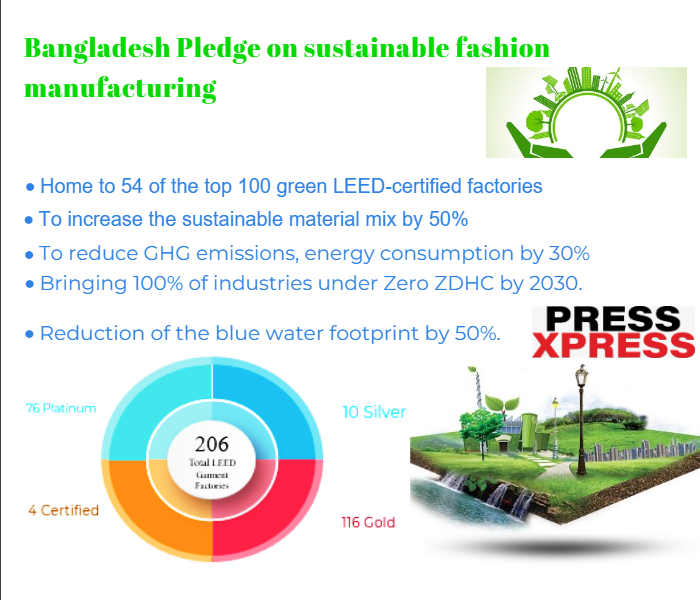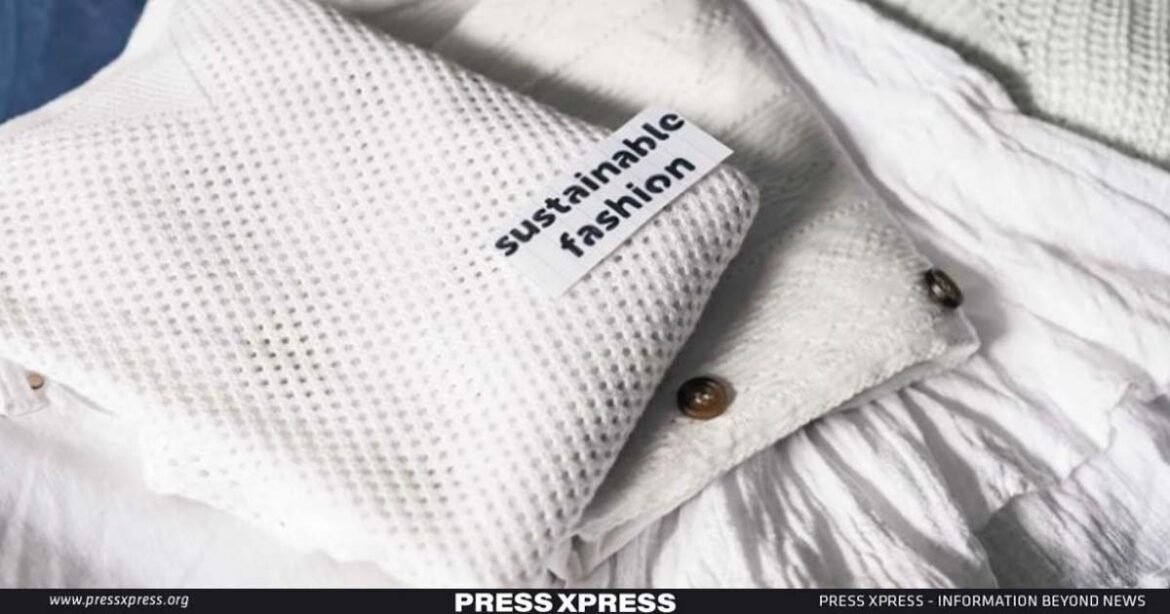As the COP28’s promising commitments echoing in the fashion industries to make fashion more sustainable, it is undeniable that there has been an acceleration in the pace towards positive change. A growing number of market players improving their efforts in terms of diversity and inclusion, while taking measures to address their negative environmental footprint.
However, Global fashion players are still behind their sustainability commitments and not on target to implement the goals of the Paris Agreement or those of the 2030 UN Agenda for Sustainable Development.
Read more at: Virtual Payments Unlock Future of Online Apparel Marketplace
The recent years have witnessed increased green pledges from luxury brands, spanning recycling initiatives for cashmere, eco-friendly packaging, sustainability bonds, and environmental pacts. In this era, sustainability has become a pervasive buzzword, strategically employed by companies to resonate with a younger, eco-conscious consumer base.
Luxury, a term linked with notions of great comfort or elegance, often involving substantial expenditure, as per the Oxford Dictionary. The conventional perception of luxury revolves around high-end, distinctive, quality, and durable items, coupled with exclusive and expensive experiences like dining at five-starred restaurants or embarking on far-flung vacations. Regrettably, this paradigm of luxury tends to endorse the utilization of excessive resources, leaving a formidable carbon footprint in both production and transportation. But it does not need to be this way.
The Impact of Fashion on the Environment
Fashion, whether it’s expensive clothes, fancy cars, or lavish vacations, has a huge impact on the environment. Luxury brands, being in high demand globally, play a significant role in causing environmental harm. They not only damage the planet but also influence society through unclear supply chains, cultural appropriation, and promoting unrealistic lifestyles that encourage excessive consumption.
The consequences of fashion on the environment are severe. It stands as the second-largest polluter globally, right after the oil industry, signaling the urgent need for a shift. As the fashion industry grows, the damage it causes increases. It contributes to 20% of the world’s wastewater and 10% of carbon emissions, surpassing the environmental impact of all international flights and maritime shipping combined. Textile dyeing, a major part of the process, is the second-largest water polluter globally.

The problem intensifies when you consider that every second, the equivalent of a truckload of textiles is either dumped in landfills or burned. If nothing changes by 2050, the fashion industry is projected to consume a quarter of the world’s carbon budget. Beyond these alarming figures, there are hidden impacts of fashion that often go unnoticed.
- More than 1.5 trillion liters of water is used by the fashion industry each year.
- 70 million trees are cut down each year to make garments.
- 23kg of greenhouse gases are generated for each kilo of fabric produced.
- 19,000 tonnes of textile microplastic fibres end up in our oceans each year.
- 93% of the world’s soil degradation is caused by overgrazing, agriculture and deforestation.
- 5.2% of the waste in our landfills are textiles.
- 23% of all chemicals produced worldwide are used just for the textile industry.
All these factors contribute significantly to climate change. With over 100 billion products leaving factories each year, many of them made from synthetic materials that take centuries to break down, the fashion industry is on a dangerous trajectory. Unfortunately, time is not on our side, and the industry must address its sustainability issues much sooner than the hundreds of years it takes for synthetic materials to biodegrade.
Consumer Awakening
Global consumers are now becoming more interested in climate friendly sustainable fashions, travels and they even willing to pay more. According to Euromonitor’s Sustainable Travel Index from August 2023, nearly 80% of travelers are willing to pay at least 10% more for sustainable features.
A recent survey by McKinsey in Europe found that two-thirds among the 2,000 people in Germany and the UK believe it has become even more important to limit impacts on climate change. Over 57% have made significant changes in their lives to be more eco-friendly, with more than 60% actively recycling and choosing environmentally friendly products.
What’s noteworthy is that 67% prioritize buying items made with sustainable materials, and 63% consider a brand’s commitment to sustainability when making a purchase. This growing concern for the planet has prompted fashion and luxury brands to explore various sustainable practices.
Fashion typically revolves around the latest trends, but the most crucial trend should be reducing consumption to ensure our planet’s survival. While achieving 100% sustainability may be challenging, making significant strides towards it is essential.
How Far Off Are We?
Even though there’s no set deadline for the fashion industry to become completely eco-friendly,
Fashion brands are starting to take more proactive measures to make the industry eco-friendly and sustainable. But the truth is, it’s unlikely the industry will ever be 100% green, but with more people wanting sustainable solutions, brands are finding new ways to meet that demand.
Just look at the materials they’re using now compared to before. Things like recycled leather, and recycled polyester are becoming popular because they’re friendlier to the environment compared to how they used to be made.
Fashion brands are not ignoring the impact they have on the environment. Many of them know that using too much cotton and microfibers is hurting our oceans. While there’s no quick fix, using better materials is a good start in making fashion more eco-friendly.
But some reasons hindering the industry from becoming fully environmentally friendly.
People are buying a lot of clothes than they need. In the UK alone, the amount of clothes bought has gone up by 10% since 2012. And get this, there’s more than £30 billion worth of clothes just sitting in closets, not worn for over a year.
Now, not all clothes can be recycled. In 2016, a whopping 300,000 tonnes of clothing got thrown away in the UK. The way clothes are made right now isn’t that great for the environment. Although some brands are trying to be more eco-friendly, it’s going to take a while before everyone catches on.
The way clothes are made isn’t keeping up with the super-fast changes in fashion. We’re not there yet with making clothes in a really eco-friendly way that can match the speedy demands of the fashion industry.
A few brands are saying they want to be 100% circular by 2030, meaning they’re trying to cut down on waste and use resources better. Even though sustainability is becoming more important, even leaders in eco-friendly fashion, like Stella McCartney, admit it’s tough to be completely sustainable right now.
How Some Brands Are Becoming Sustainable
Brands are doing more than just talking about being eco-friendly. Let’s look at some examples to see how serious they are about it and why focusing on sustainability could be a step in the right direction.
Adidas: They teamed up with Parley to collect plastic from the ocean and plan to make 11 million pairs of shoes from it.
Stella McCartney: They use eco-friendly materials like recycled polyester, organic cotton, and regenerated cashmere.
Patagonia: They use cotton certified organic by the Global Organic Textile Standard (GOTS), and 56% of their fabrics are bluesign certified.
Gucci: They got rid of plastic in their packaging and now use paper dyed with beater, sourced from FSC certified forests.
Armani: They buy products made from virgin fibers that are FSC certified, and they promote water-based ink and got rid of lamination.
G-Star RAW: They use lots of sustainable materials and aim to use 100% sustainable cotton by 2020.
These are just a few examples of big brands getting more sustainable. It’s a good place for smaller brands to get inspiration. Even small steps, like creating an eco-friendly line, can make a difference.
These small steps are what will lead to the big goal of making the fashion industry as sustainable as possible.
Bangladesh ‘unbeatable’ on sustainable fashion manufacturing
Bangladesh High Commissioner to the UK, Ireland and Liberia, Saida Muna Tasneem told a delegation at the UK’s House of Lords that Bangladesh’s fashion manufacturing industry is “unbeatable” in terms of Environment, Social and Governance (ESG) and it is time to spread this message to global consumers
Bangladesh is “unbeatable in the context of sustainability as it is home to the “highest green garment factories in the world” with 53 of the top 100 green LEED-certified factories and more in the pipeline, she said, noting: “It’s not China or anywhere else – it’s Bangladesh”.

Bangladesh has pledged to increase the sustainable material mix by 50% in line with Sustainable Development Goal 12 – ensuring sustainable consumption and production patterns – by 2030.
The Circular Economy in Bangladesh’s Apparel Industry (CREATE) project has been launched to investigate the circular economy transition in global apparel value chains linked with Bangladesh’s apparel industry and develop effective policies.
Energy efficiency, renewable energy and carbon footprint reduction have been one of the core areas of concern for the BGMEA. Therefore, investments in renewable energy and energy-efficient technologies have become imperative throughout the industry.
The BGMEA has set a target to reduce Greenhouse Gas (GHG) emissions and energy consumption by 30% by 2030 and reduce deforestation by 30% within the same deadline.
To become a safer apparel manufacturing country, the BGMEA has set a target of bringing 100% of industries under Zero Discharge of Hazardous Chemicals (ZDHC) Certification and Testing Programs by 2030. At the same time, we are pushing for a reduction of the blue water footprint by 50%.
The BGMEA is setting up the “Centre for Innovation, Efficiency and OSH” at its own premises to focus on newer avenues of enhancing our sustainability vision and competitiveness through efficiency improvement and cost optimisation.


